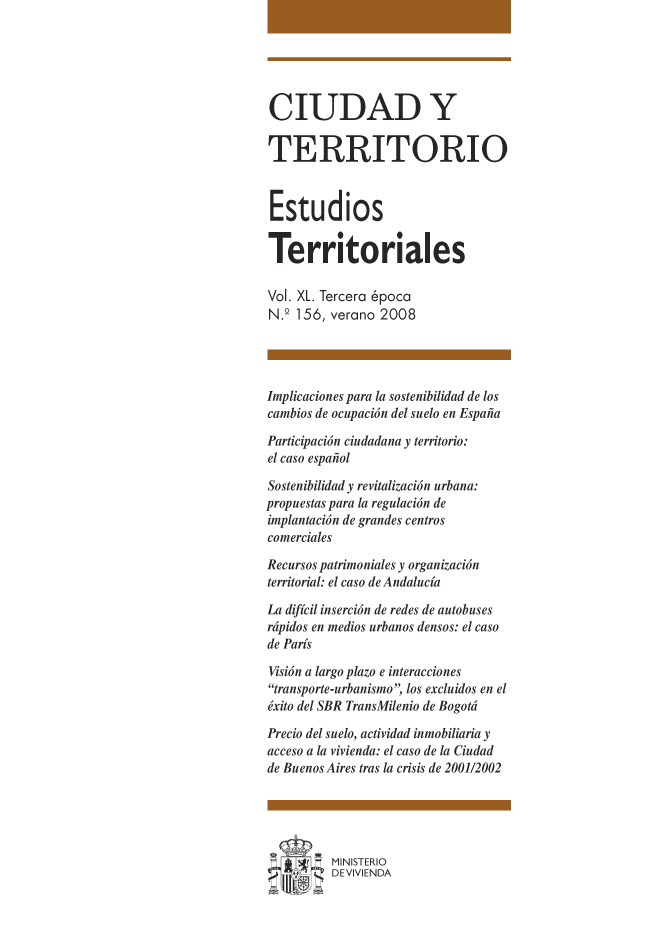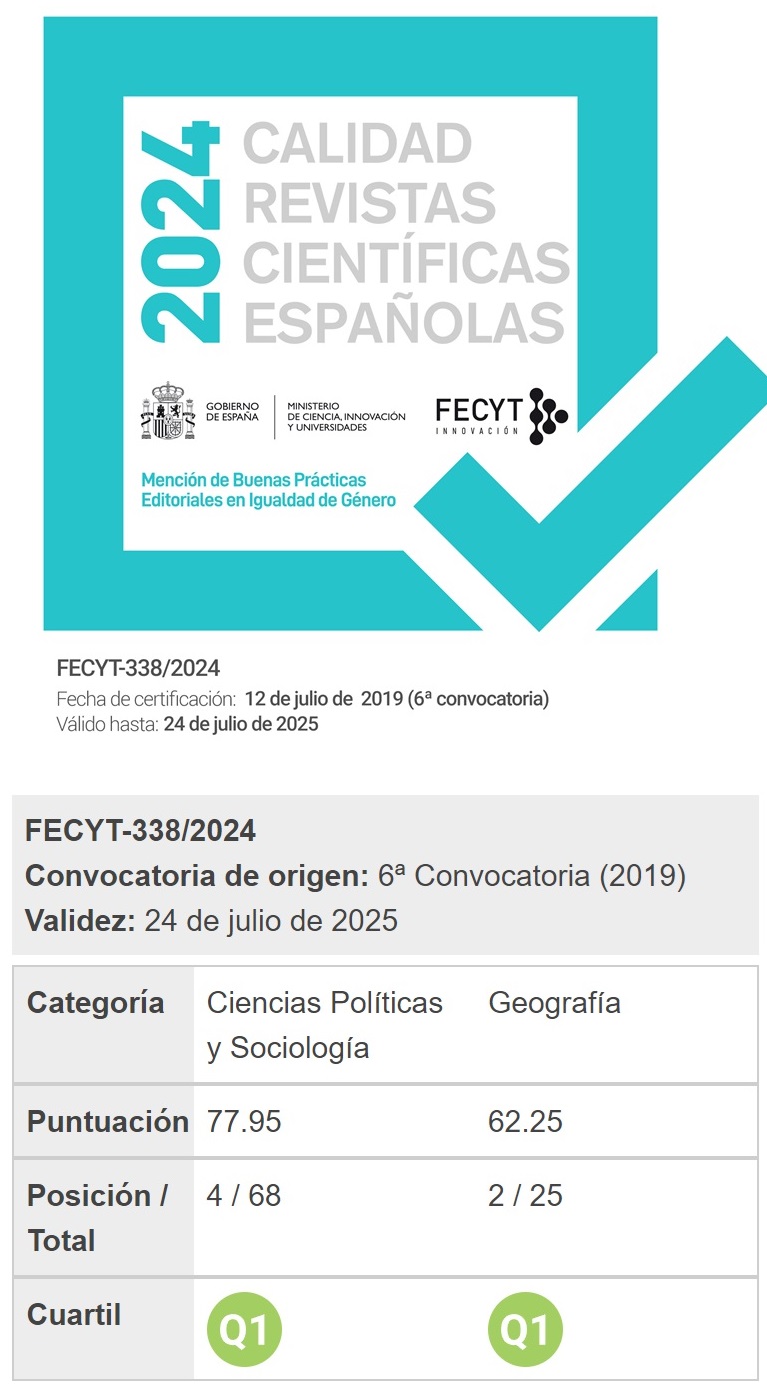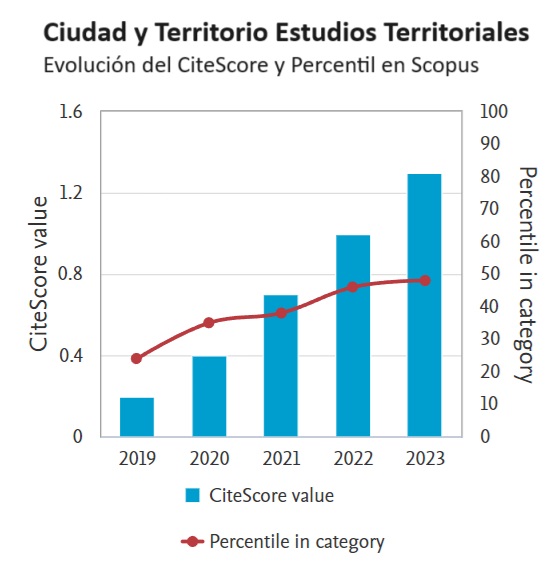La difícil inserción de redes de autobuses rápidos en medios urbanos densos: el caso de París
Palabras clave:
Transporte urbano, análisis urbano, ordenación urbana, París (Francia)Resumen
Numerosas ciudades europeas han apostado en los últimos años por revitalizar las redes de
autobuses urbanos inspirándose en los ejemplos americanos de autobuses rápidos (Bus Rapid Transit). Este
artículo describe y analiza el caso de París que vive desde mediados del 2001 una transformación espectacular
de numerosas de sus principales vías. En ellas se reduce el espacio de circulación de los automóviles para
crear carriles reservados a los autobuses y a la circulación de bicicletas, taxis y vehículos de emergencia. El
ejemplo parisino presenta numerosos inconvenientes que ponen de relieve los problemas que suscita de una
manera general la inserción de una red de autobuses rápidos en un medio urbano denso: conflictos con las
actividades comerciales y de proximidad, inseguridad de los peatones y ciclistas, problemas de accesibilidad
al bus... Muestra además que el autobús no puede satisfacer por sí solo todas las necesidades de movilidad de
los ciudadanos y que debe pensarse como complemento de otros modos (especialmente el metro). Sin embargo,
el proyecto de la capital francesa ha probado también su eficacia en la limitación del tráfico automovilístico
en el centro urbano, lo que constituía el principal objetivo del ayuntamiento.
Descargas
Descargas
Publicado
Cómo citar
Número
Sección
Licencia
Derechos de autor 2008 Antonio González Álvarez

Esta obra está bajo una licencia internacional Creative Commons Atribución-NoComercial-SinDerivadas 4.0.
Sin perjuicio de lo dispuesto en la legislación vigente sobre Propiedad Intelectual, y conforme a la misma, el/la los/las autor/a/es/as que publiquen en CyTET cede/n a título gratuito, de modo no exclusivo y sin límite temporal al Ministerio de Transportes, Movilidad y Agenda Urbana los derechos para difundir, reproducir, comunicar y distribuir en cualquier formato actual o futuro, en papel o electrónico, la versión original o derivada de su obra bajo licencia de Creative Commons Reconocimiento-NoComercial-SinObraDerivada 4.0 Internacional (CC BY-NC-ND 4.0), así como para incluir o ceder a terceros la inclusión de su contenido en índices, repositorios y bases de datos nacionales e internacionales, con referencia y reconocimiento en todo caso de la autoría del mismo.
Además, al realizar el envío, el/la los/las autor/a/es/as declara/n que se trata de un trabajo original en el que se reconocen las fuentes que han sido utilizadas en su estudio, comprometiéndose a respetar la evidencia científica y a no modificar los datos originales para verificar o refutar una hipótesis de partida; que el contenido esencial del mismo no ha sido publicado previamente ni se publicará en ninguna otra obra o revista mientras esté en proceso de evaluación en la revista CyTET; y que no se ha remitido simultáneamente a otra publicación.
Los autores deben firmar un Formulario de Cesión de Derechos, que les será enviado desde la Secretaría de CyTET una vez se acepte su artículo para ser publicado.
Con el objetivo de favorecer la difusión del conocimiento, CyTET se adhiere al movimiento de revistas de Open Access (OA) y entrega la totalidad de sus contenidos a diversos índices, repositorios y bases de datos nacionales e internacionales bajo este protocolo; por tanto, la remisión de un trabajo para ser publicado en la revista presupone la aceptación explícita por parte del autor/a de este método de distribución.
Se anima a las/os autoras/es a reproducir y alojar sus trabajos publicados en CyTET en repositorios institucionales, páginas web, etc. con la intención de contribuir a la mejora de la transferencia del conocimiento y de la citación de dichos trabajos.








 Enlace a CyTET en Linkedin
Enlace a CyTET en Linkedin